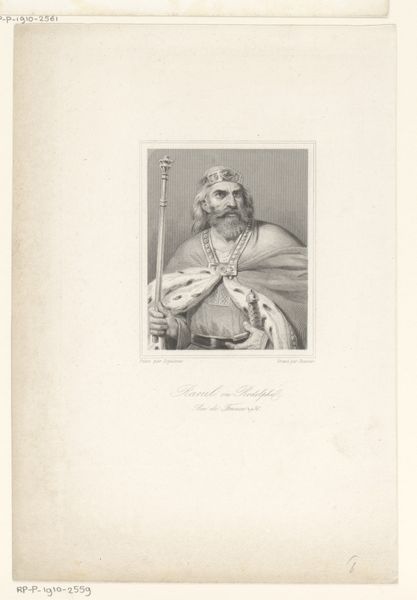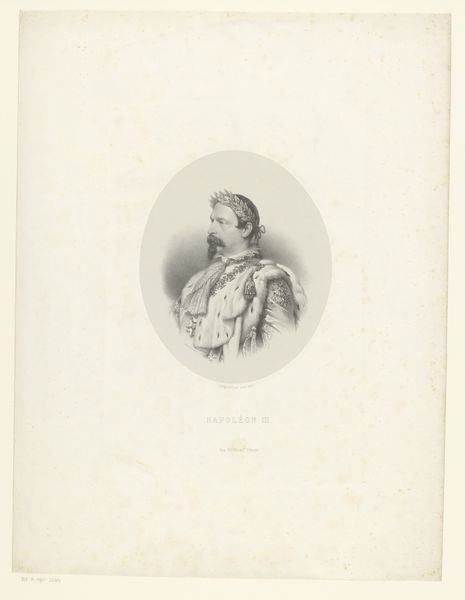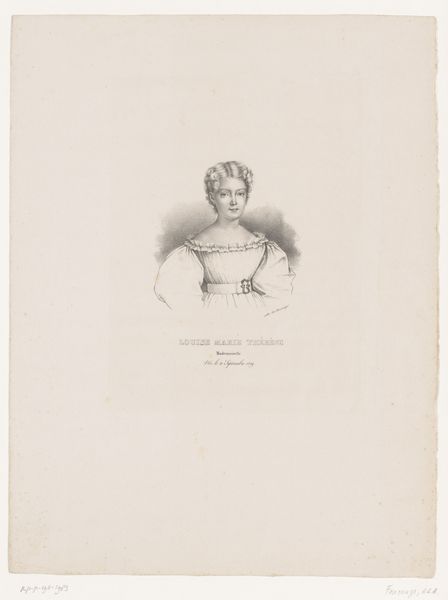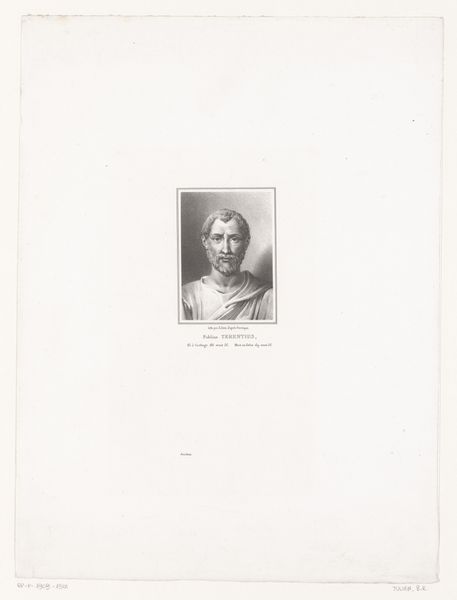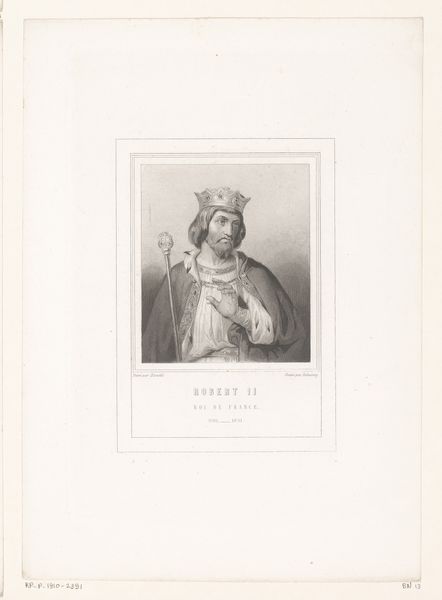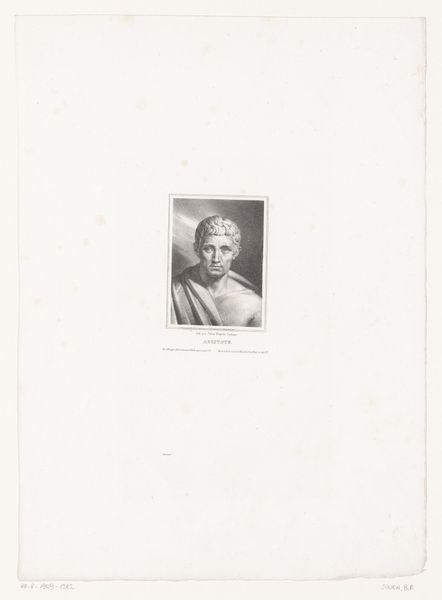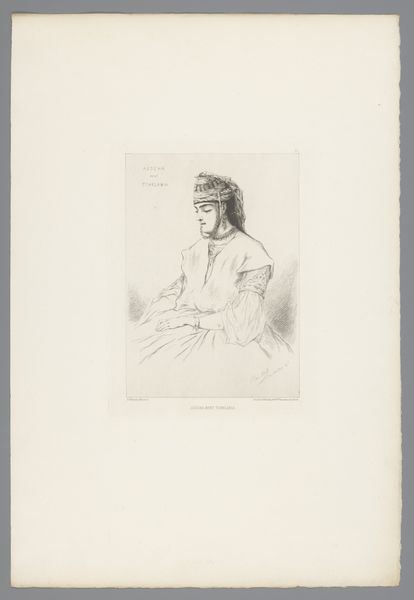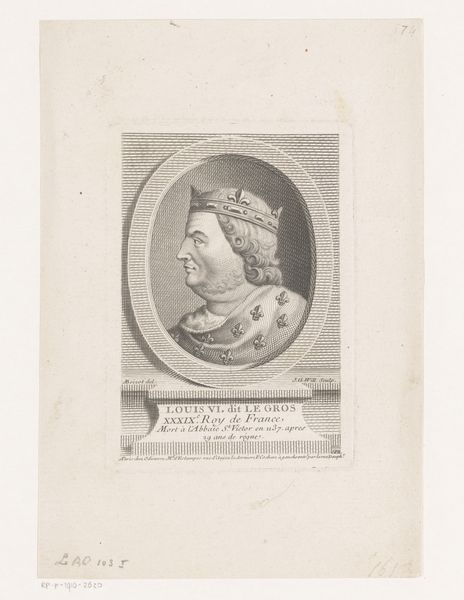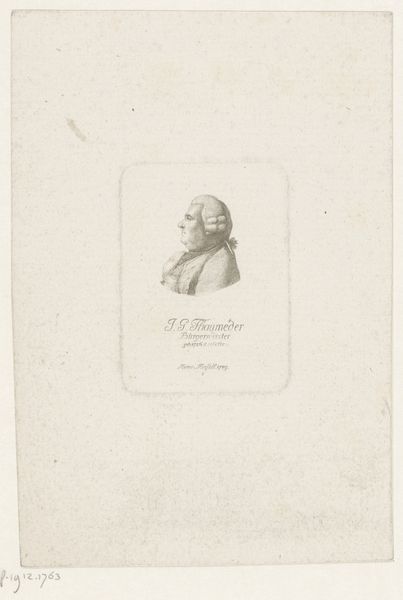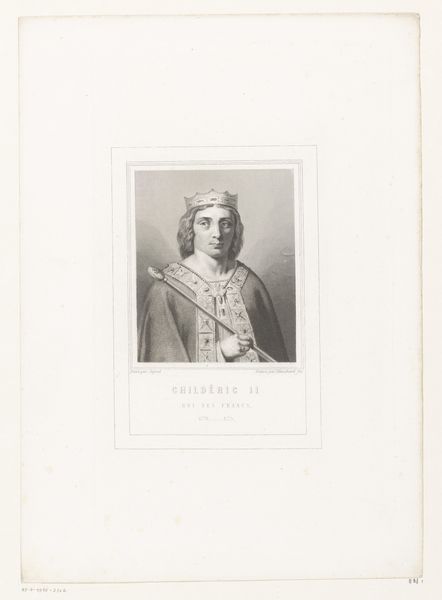
print, engraving
#
portrait
#
neoclacissism
# print
#
old engraving style
#
history-painting
#
engraving
Dimensions: height 198 mm, width 138 mm
Copyright: Rijks Museum: Open Domain
Curator: The artwork before us is an engraving titled "Portretbuste van schrijfster Giustina Renier Michiel," dating back to the period 1791-1868, crafted by Antonio Nardello. Editor: It's a study in serene authority, wouldn’t you say? Almost neoclassical in its reserve, but with a softer, more human gaze. The texture, especially the folds of her drapery, feel almost palpable. Curator: Absolutely. The artist renders her in that neoclassical style—very popular at the time, consciously echoing the art of ancient Greece and Rome. Note the oval frame that encloses the bust, reminiscent of ancient cameos or portrait medallions. Editor: It lends her this timeless, almost mythical quality. But then, you focus on her face, and you see a real person looking back, thoughtful and… knowing, somehow. It breaks the illusion a bit. Curator: Precisely. While Nardello uses the neoclassical framework, there’s something that transcends mere stylistic exercise. It gives an interesting glimpse of how important intellectual figures were celebrated. Her gaze, her bearing... they exude an intelligence befitting a celebrated writer. Editor: I love how the drapery both frames her face and hints at something deeper, almost symbolic. The way the fabric gently hugs the contours of her bust, before the printmaking opens up with more flowing freedom around her head is a detail worth noticing. I think this visual device evokes layers of intellectual pursuit and accomplishment. Curator: I'd say it’s fascinating to note how artists used the visual vocabulary of antiquity to ennoble contemporary figures, linking them to a tradition of wisdom and cultural achievement. By referencing that past, they created an idealized representation of the subject’s intellectual contributions to Venetian society and history. Editor: Thinking about all these symbols... Giustina becomes this quiet, forceful symbol of knowledge. Now, standing before it, I also see a celebration of intellect—that we need to champion now more than ever! Curator: I couldn’t agree more. This engraving serves as a poignant reminder of the enduring power of ideas and those who dare to articulate them.
Comments
No comments
Be the first to comment and join the conversation on the ultimate creative platform.

